CIMA - C1 Fundamentals of Management Accounting
Подождите немного. Документ загружается.


330
13: Job, batch and contract costing ⏐ Part D Costing and accounting systems
6 B A pizza manufacturer would probably use batch costing. A manufacturer of sugar would probably use process
costing, as would a manufacturer of screws.
7 Estimated total profits
$'000
Total contract price
12,000
Less: costs to date (W1)
(7,320)
Less: estimated costs to complete
(810
)
3,870
Actual level of completion
price contract Total
certified work of Value
=
12,000
9,000
= 75%
costs total Estimated
date to Costs
=
810 7,320
7,320
+
=
8,130
7,320
= 90% Remember to choose the lower percentage.
Profit to date = 75% x $3,870,000
= $2,902,500
Workings
(1) Contract W
$'000
$'000
Materials
4,200
Materials returned to stores
480
Plant hire charges
1,200
Labour
1,800
Cost of work certified
Other expenses
600
(balancing figure)
7,320
7,800
7,800
Now try the questions below from the Question Bank
Question numbers Page
79–86 369
351433 www.ebooks2000.blogspot.com
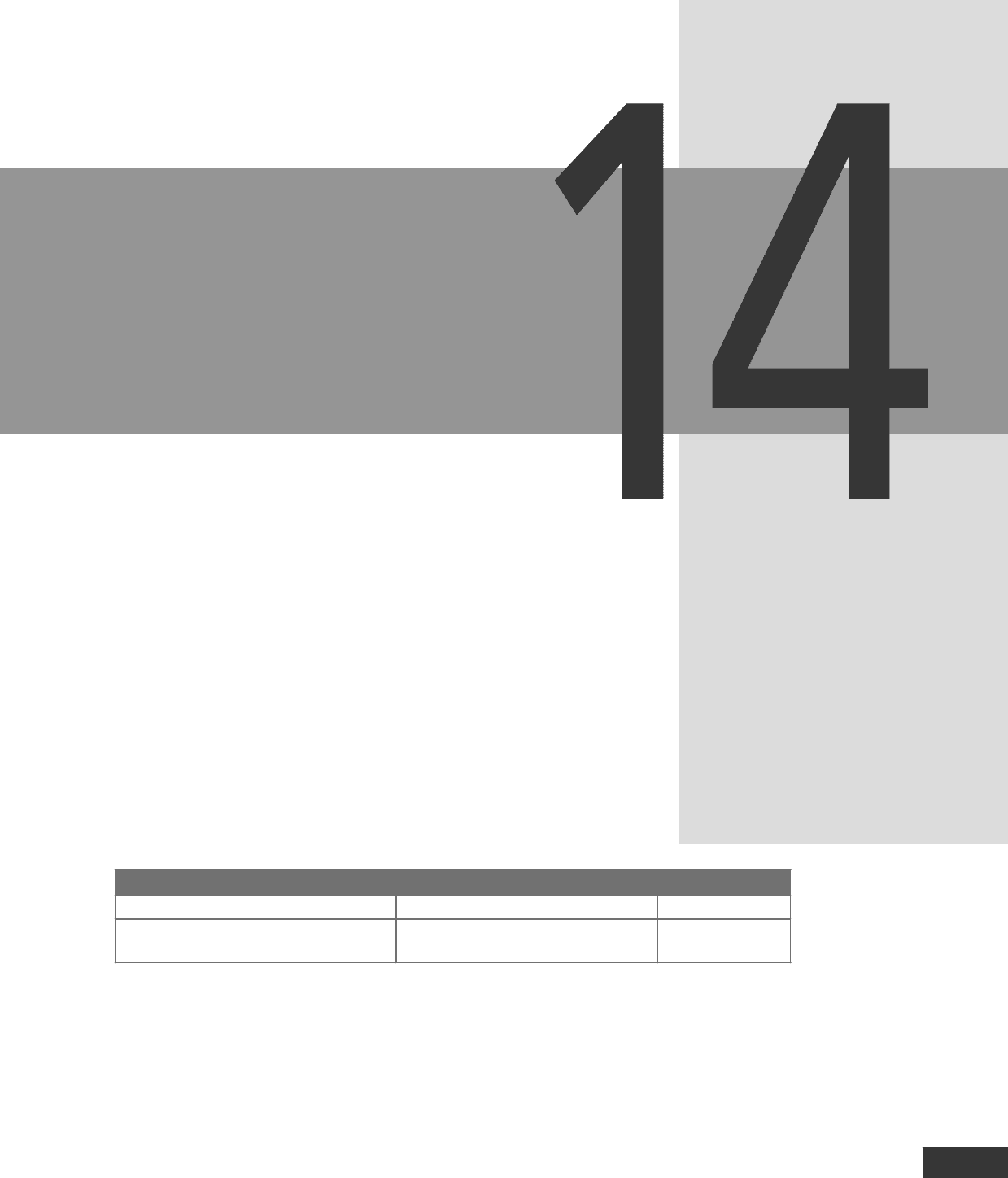
331
Topic list Learning outcomes Syllabus references Ability required
1 Service costing D(x) D(6) Analysis
2 Management reports D(viii), (ix), (x) D(6) Comprehension,
Application, Analysis
Service costing
Introduction
So far in this Study Text we have looked at different types of cost and different cost
accounting systems and the inference has been that we have been discussing a
manufacturing organisation. Most of the cost accounting principles we have looked at so far
can also be applied to service organisations, however.
In this chapter we will therefore look at the costing method used by service organisations
which we will call service costing. As you study this chapter, you will see how the knowledge
you have built up can be applied easily to service organisations.
In the final section of this chapter, and indeed of this Study Text, we'll think about managerial
reports, and the type of information managers of a range of organisations require.
352433 www.ebooks2000.blogspot.com
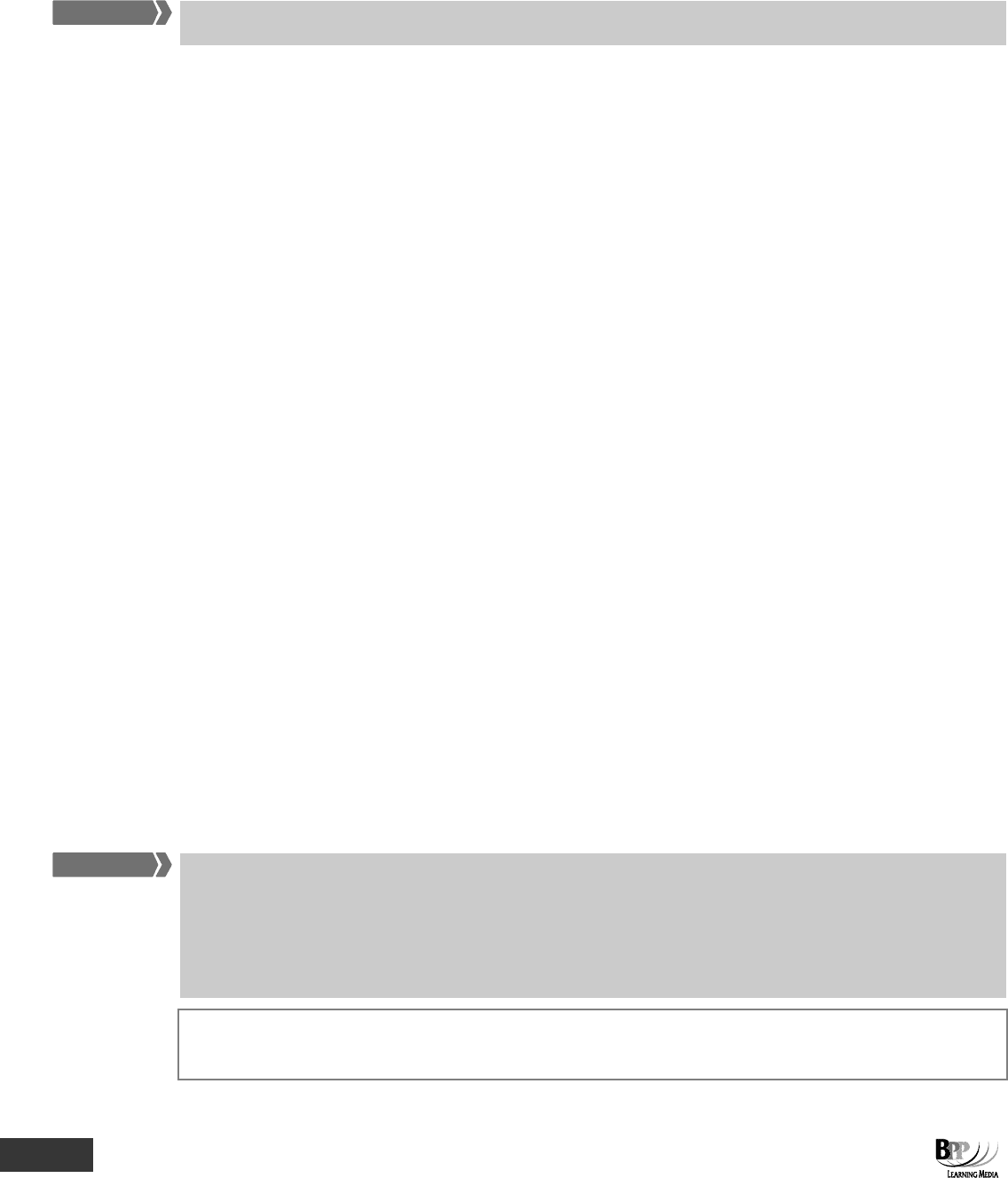
332
14: Service costing ⏐ Part D Costing and accounting systems
1 Service costing
Service organisations do not make or sell tangible goods.
1.1 What are service organisations?
Profit-seeking service organisations include accountancy firms, law firms, management consultants, transport
companies, banks, insurance companies and hotels. Almost all not-for-profit organisations - hospitals, schools,
libraries and so on – are also service organisations. Service organisations also include charities and the public sector.
1.2 Service costing versus other costing methods
(a) With many services, the cost of direct materials consumed will be relatively small compared to the
labour, direct expenses and overheads cost. In product costing the direct materials are often a greater
proportion of the total cost.
(b) Because of the difficulty of identifying costs with specific cost units in service costing, the indirect costs
tend to represent a higher proportion of total cost compared with product costing.
(c) The output of most service organisations is often intangible and hence difficult to define. It is therefore
difficult to establish a measurable cost unit.
(d) The service industry includes such a wide range of organisations which provide such different services
and have such different cost structures that costing will vary considerably from one service to another.
(e) There is often a high fixed cost of maintaining an organisation's total capacity, which may be very
under utilised at certain times. Consider the demand for railway and bus services, for example. Demand
at midday is likely to be much lower than demand during the rush hours. The costing system must
therefore be comprehensive enough to show the effects of this type of demand on the costs of operation.
This often involves the analysis of costs into fixed and variable components, and the use of marginal
costing techniques and breakeven analysis. 'Cut-price' prices can then be offered, which might produce a
low but still positive contribution to the organisation's high operational fixed costs.
You should bear in mind, however, that service organisations often have large-scale operations (think about power
stations, large city hospitals) that require sophisticated cost control techniques to manage the very high level of costs
involved. One such technique is control using flexible budgets, which we looked at in Chapter 10, and which can apply
equally to service organisations as to manufacturing ones.
1.3 Characteristics of services
Specific characteristics of services
•
Intangibility
•
Simultaneity
•
Perishability
• Heterogeneity
Make sure you learn the four specific characteristics of services. This will help you identify organisations that might use
service costing.
FA
S
T F
O
RWAR
D
FA
S
T F
O
RWAR
D
Assessment
focus point
353433 www.ebooks2000.blogspot.com
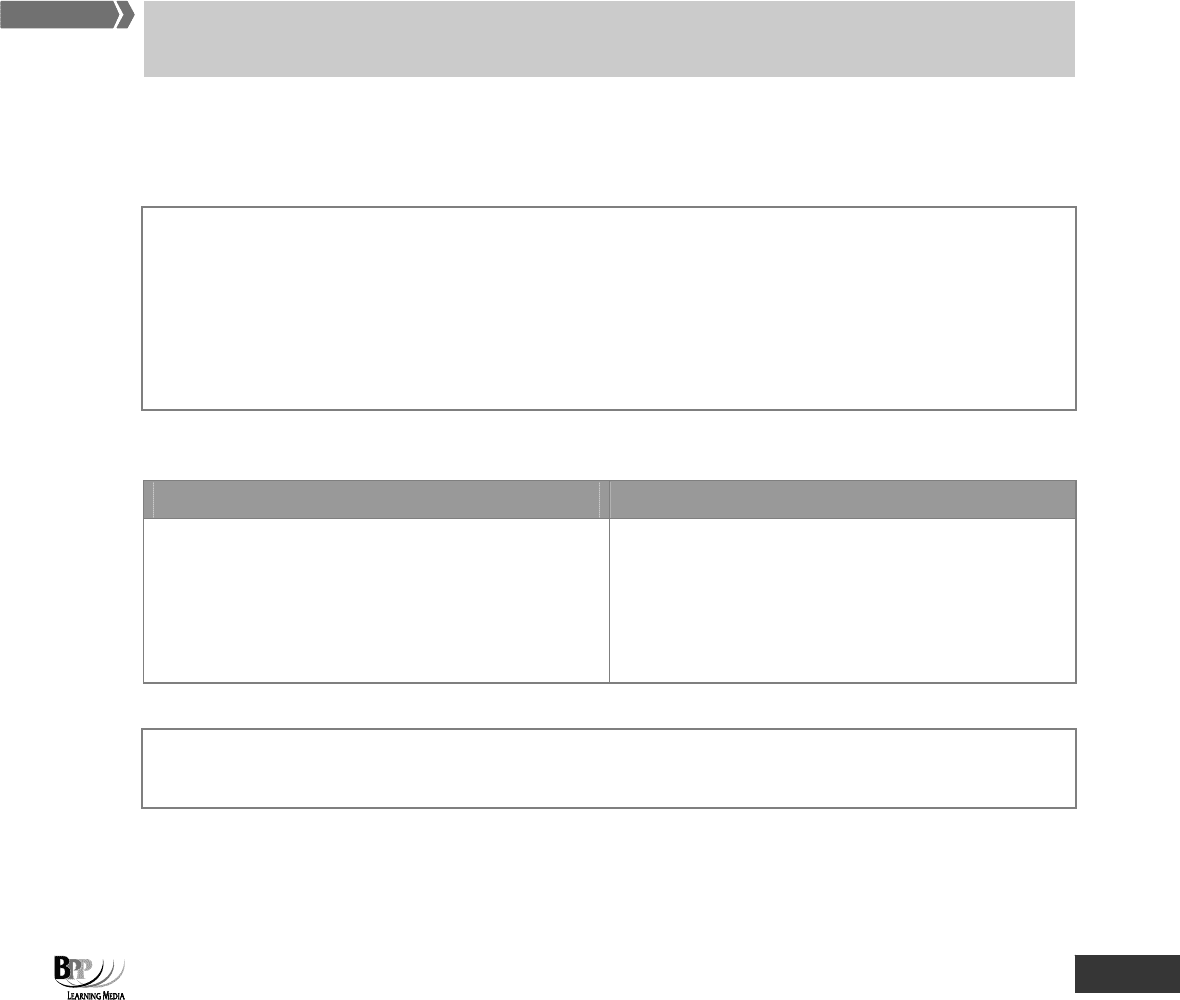
Part D Costing and accounting systems ⏐ 14: Service costing
333
Consider the service of providing a haircut.
(a) A haircut is intangible in itself, and the performance of the service comprises many other intangible
factors, like the music in the salon, the personality of the hairdresser, the quality of the coffee.
(b) The production and consumption of a haircut are simultaneous, and therefore it cannot be inspected for
quality in advance, nor can it be returned if it is not what was required.
(c) Haircuts are perishable, that is, they cannot be stored. You cannot buy them in bulk, and the hairdresser
cannot do them in advance and keep them stocked away in case of heavy demand. The incidence of work
in progress in service organisations is less frequent than in other types of organisation.
(d) A haircut is heterogeneous and so the exact service received will vary each time: not only will two
hairdressers cut hair differently, but a hairdresser will not consistently deliver the same standard of haircut.
1.4 Cost units and service costing
One main problem with service costing is being able to define a realistic cost unit that represents a suitable measure of
the service provided. If the service is a function of two activity variables, a composite cost unit may be more appropriate.
A particular problem with service costing is the difficulty in defining a realistic cost unit that represents a suitable
measure of the service provided. Frequently, a composite cost unit may be deemed more appropriate if the service is a
function of two activity variables. Hotels, for example, may use the 'occupied bed-night' as an appropriate unit for cost
ascertainment and control. You may remember that we discussed such cost units in Chapter 1.
An objective test question in a previous syllabus assessment asked candidates to identify characteristics of service
costing from a number of different characteristics listed. The two relevant characteristics in the particular list provided
were:
• High levels of indirect cost as a proportion of total cost
• Use of composite cost units
A similar question may come up in your computer-based assessment: be prepared!
1.4.1 Typical cost units used by companies operating in a service industry
Service Cost unit
Road, rail and air transport services
Hotels
Education
Hospitals
Catering establishments
Passenger-kilometre, tonne-kilometre
Occupied bed-night
Full-time student
Patient-day
Meal served
Each organisation will need to ascertain the cost unit most appropriate to its activities.
Make sure that you are familiar with suitable composite cost units for common forms of service operation such as
transport.
Assessment
focus point
Assessment
focus point
FAST FORWARD
354433 www.ebooks2000.blogspot.com

334
14: Service costing ⏐ Part D Costing and accounting systems
1.4.2 Cost per unit
Average cost per unit of service =
period the in supplied units service of Number
period the in incurred costs Total
1.4.3 The use of unit cost measures in not-for-profit organisations
The success of not-for-profit organisations cannot be judged in terms of profitability, nor against competition.
Not-for-profit organisations include private sector organisations such as charities and churches and much of the public
sector (the National Health Service, the police, schools and so on).
Commercial organisations generally have profit or market competition as the objectives which guide the process of
managing resources economically, efficiently and effectively. However, not-for-profit organisations cannot by definition be
judged by profitability nor do they generally have to be successful against competition, so other methods of assessing
performance have to be used.
Most financial measures of performance for not-for-profits therefore tend to be cost based. Costs are collected relative to
some measure of output and a unit cost calculated as described above.
Unit cost measures in not-for-profit organisations have three main uses.
(a) As a measure of relative efficiency
Efficiency means getting out as much as possible for what goes in.
Most not-for-profit organisations do not face competition but this does not mean that all not-for-profit
organisations are unique. Bodies like local governments, health services and so on can compare their
performance against each other. Unit cost measurements like 'cost per patient day' or 'cost of borrowing
one library book' can be established to allow organisations to assess whether they are doing better or
worse than their counterparts.
Bear in mind, however, that the comparisons are only valid if, say, the hospitals cater for broadly the same
type of patients, the same illnesses, are similarly equipped and so on. Cost comparisons are only valid if
like is being compared with like.
(b) As a measure of efficiency over time
Unit costs of the same organisation can be compared from period to period. This will help to highlight
whether efficiency is increasing or decreasing over time.
(c) As an aid to cost control
If unit costs are produced on a regular basis and compared with other similar organisations, this will help
to control costs and should engender a more cost-conscious attitude.
FA
S
T F
O
RWAR
D
FA
S
T F
O
RWAR
D
355433 www.ebooks2000.blogspot.com
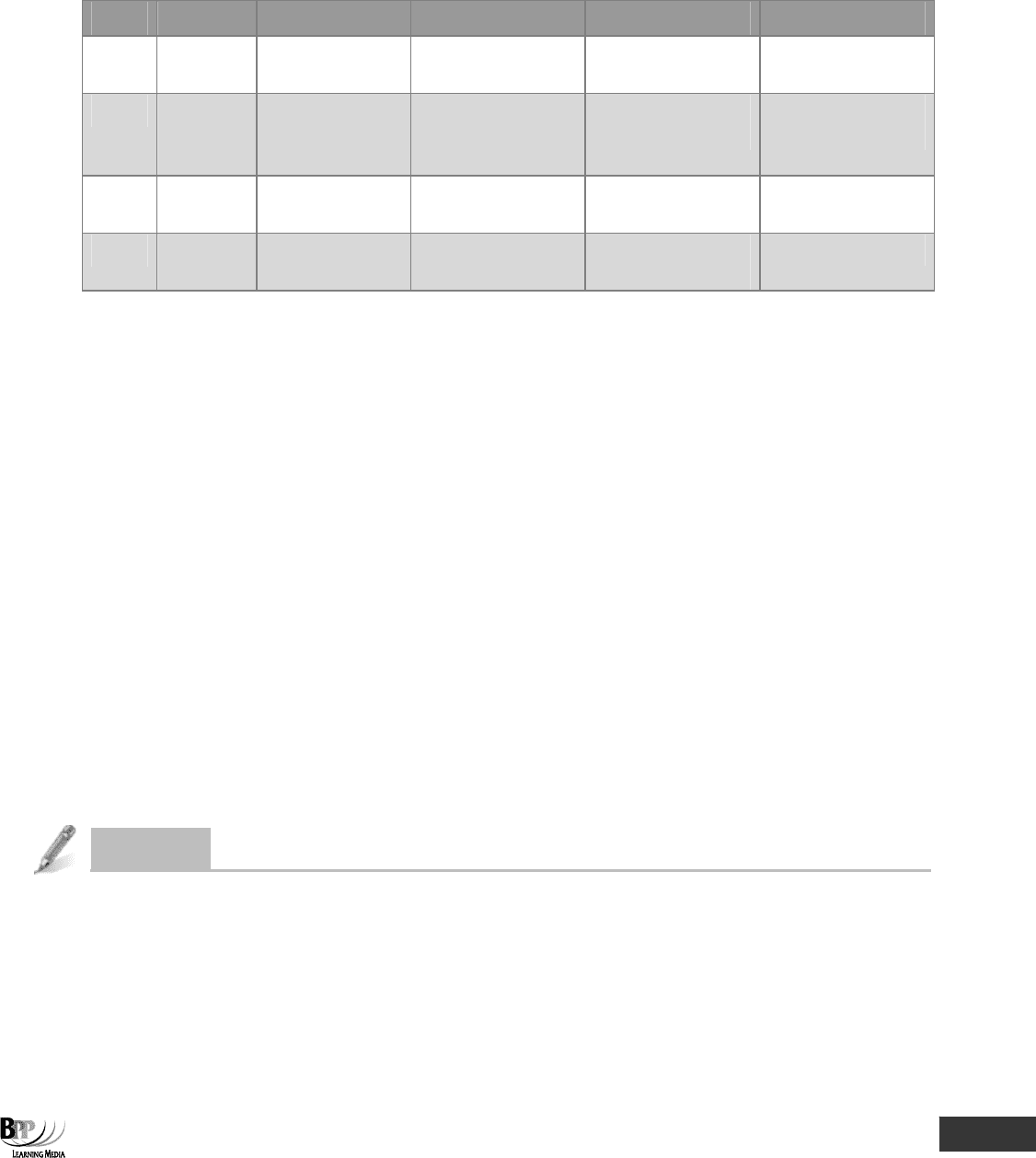
Part D Costing and accounting systems ⏐ 14: Service costing
335
1.4.4 Example: cost units in not-for-profit organisations
Suppose that at a cost of $40,000 and 4,000 hours (inputs) in an average year, two policemen travel 8,000 miles and are
instrumental in 200 arrests (outputs). A large number of possibly meaningful measures can be derived from these few
figures.
$40,000
4,000 hours
8,000 miles
200 arrests
Cost
$40,000
$40,000/4,000 = $10
per hour
$40,000/8,000 = $5
per mile
$40,000/200 = $200
per arrest
Time
4,000 hrs
4,000/$40,000 = 6
minutes patrolling
per $1 spent
4,000/8,000 = ½ hour
to patrol 1 mile
4,000/200 = 20 hours
per arrest
Miles
8,000
8,000/$40,000 =
0.2 of a mile per $1
8,000/4,000 = 2 miles
patrolled per hour
8,000/200 = 40 miles
per arrest
Arrests
200
200/$40,000 = 1
arrest per $200
200/4,000 = 1 arrest
every 20 hours
200/8,000 = 1 arrest
every 40 miles
These measures do not necessarily identify cause and effect or personal responsibility and accountability. Actual
performance needs to be compared to the following.
z
Standards, if there are any
z
Targets
z
Similar external activities
z
Over time – ie as trends
z
Similar internal activities
1.4.5 Limitations of using unit costs
(a) Quality of performance is ignored. Cost per patient day tells us nothing about the quality of the care
provided, whether the patients are cured and so on.
(b) The input mix will vary. For example, the average cost per patient in a intensive care ward is likely to be
higher than the average cost per patient in a post-operative recovery ward.
(c) Inputs rather than objectives are measured. Inputs might be the number of eye operations carried out in
a hospital but cost per eye operation does not give any indication of the objective of the eye department in
a hospital, which might be something along the lines of improving the quality of life of people with eye
problems.
(d) Regional differences are not taken into consideration. For example, the cost of refuse collection in rural
areas will probably be higher than in towns and cities because of the distance to be travelled.
The following examples will illustrate the principles involved in service costing and the further considerations to bear in
mind when costing services.
Question
Service costing companies
Which of the following organisations should not be advised to use service costing.
A Freight rail company
B IT department of a company
C Catering company
D Clothing company
356433
www.ebooks2000.blogspot.com

336
14: Service costing ⏐ Part D Costing and accounting systems
Answer
D All of the activities would use service costing except the clothing manufacturer which will provide products not
services.
1.5 Example: costing an educational establishment
A university offers a range of degree courses. The university organisation structure consists of three faculties each with a
number of teaching departments. In addition, there is a university administrative/management function and a central
services function.
(a) The following cost information is available for the year ended 30 June 20X3.
(i) Occupancy costs
Total $1,500,000
Such costs are apportioned on the basis of area used which is as follows.
Square metres
Faculties 7,500
Teaching departments 20,000
Administration/management 7,000
Central services 3,000
(ii) Administrative/management costs
Direct costs: $1,775,000
Indirect costs: an apportionment of occupancy costs
Direct and indirect costs are charged to degree courses on a percentage basis.
(iii) Faculty costs
Direct costs: $700,000
Indirect costs: an apportionment of occupancy costs and central service costs
Direct and indirect costs are charged to teaching departments.
(iv) Teaching departments
Direct costs: $5,525,000
Indirect costs: an apportionment of occupancy costs and central service costs plus all faculty costs
Direct and indirect costs are charged to degree courses on a percentage basis.
(v) Central services
Direct costs: $1,000,000
Indirect costs: an apportionment of occupancy costs
(b) Direct and indirect costs of central services have, in previous years, been charged to users on a percentage basis.
A study has now been completed which has estimated what user areas would have paid external suppliers for the
same services on an individual basis. For the year ended 30 June 20X3, the apportionment of the central services
cost is to be recalculated in a manner which recognises the cost savings achieved by using the central services
facilities instead of using external service companies. This is to be done by apportioning the overall savings to
user areas in proportion to their share of the estimated external costs.
357433 www.ebooks2000.blogspot.com
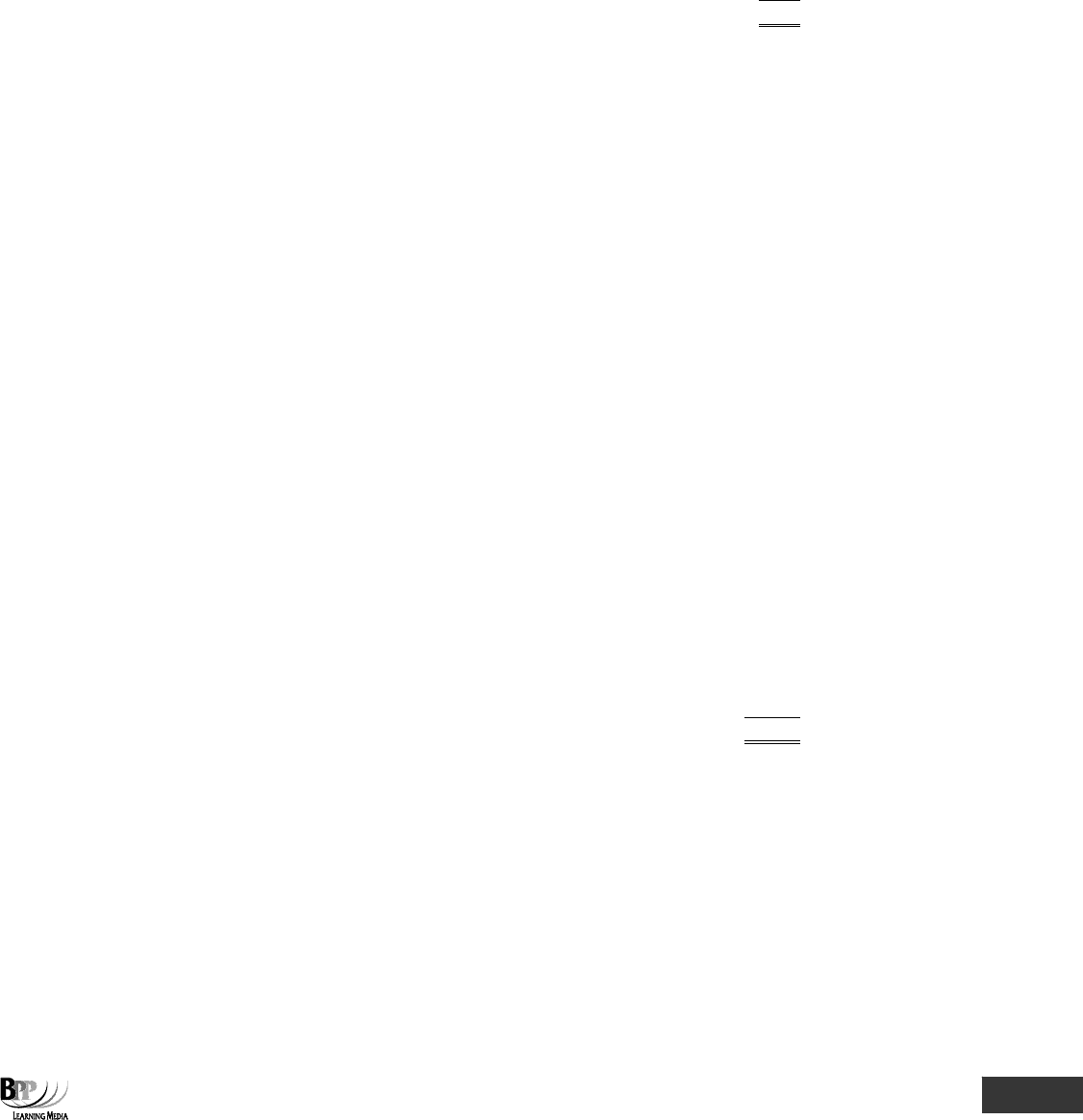
Part D Costing and accounting systems ⏐ 14: Service costing
337
The estimated external costs of service provision are as follows.
$'000
Faculties
240
Teaching departments
800
Degree courses:
Business studies
32
Mechanical engineering
48
Catering studies
32
All other degrees
448
1,600
(c) Additional data relating to the degree courses is as follows.
Degree course
Business Mechanical Catering
studies engineering studies
Number of graduates 80 50 120
Apportioned costs (as % of totals)
Teaching departments 3.0% 2.5% 7%
Administration/management 2.5% 5.0% 4%
Central services are to be apportioned as detailed in (b) above.
The total number of undergraduates from the university in the year to 30 June 20X3 was 2,500.
Required
(a) Calculate the average cost per undergraduate for the year ended 30 June 20X3.
(b) Calculate the average cost per undergraduate for each of the degrees in business studies, mechanical engineering
and catering studies, showing all relevant cost analysis.
Solution
(a) The average cost per undergraduate is as follows.
Total costs for
university
$'000
Occupancy
1,500
Admin/management
1,775
Faculty
700
Teaching departments
5,525
Central services
1,000
10,500
Number of undergraduates
2,500
Average cost per undergraduate for year ended 30 June 20X3
$4,200
358433 www.ebooks2000.blogspot.com
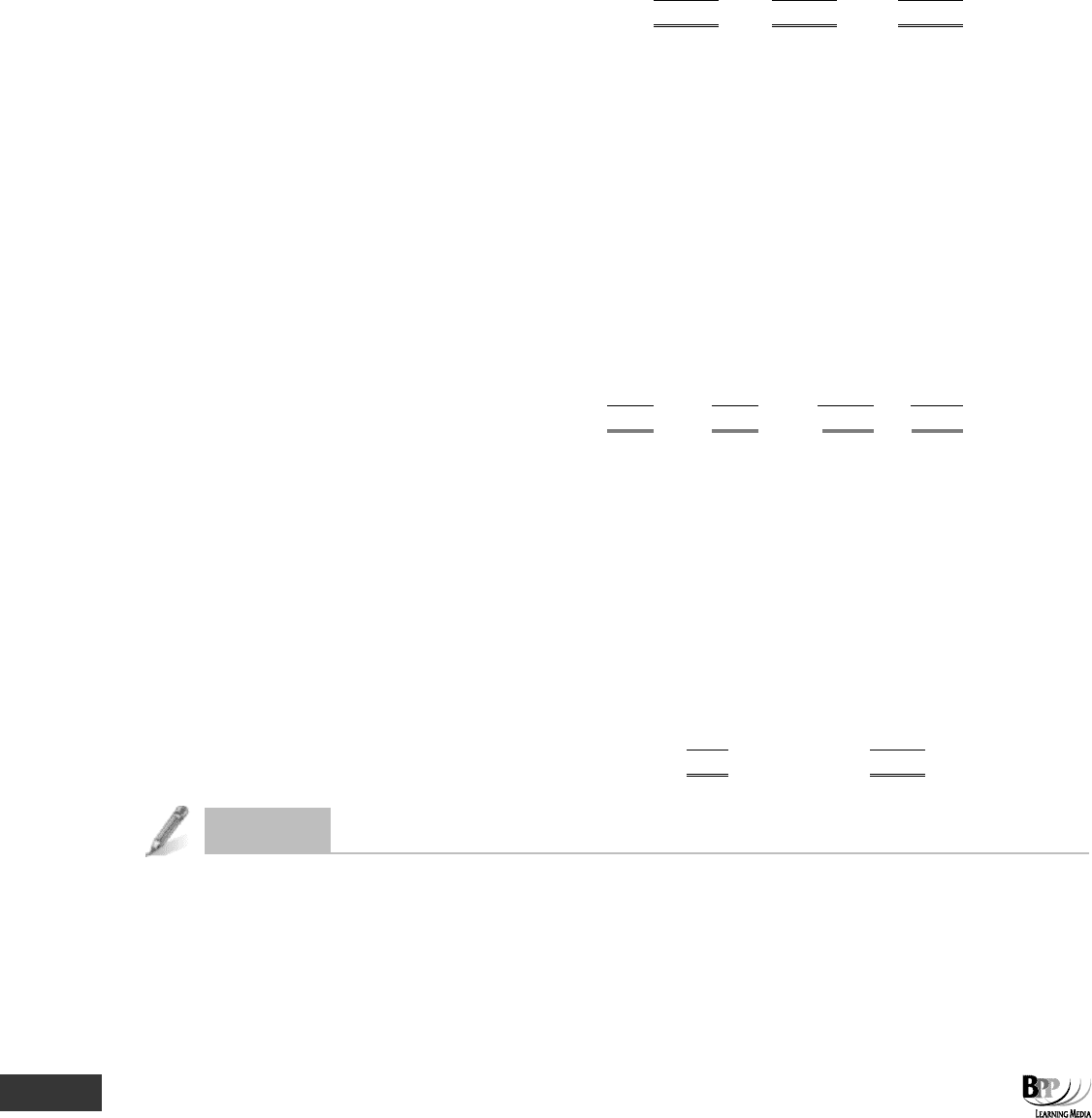
338
14: Service costing ⏐ Part D Costing and accounting systems
(b) Average cost per undergraduate for each course is as follows.
Business Mechanical Catering
studies engineering studies
$
$
$
Teaching department costs
(W1 and using % in question)
241,590
201,325
563,710
Admin/management costs
(W1 and using % in question)
51,375
102,750
82,200
Central services (W2)
22,400
33,600
22,400
315,365
337,675
668,310
Number of undergraduates
80
50
120
Average cost per undergraduate for year
ended 30 June 20X3
$3,942
$6,754
$5,569
Workings
1 Cost allocation and apportionment
Basis of
Teaching
Admin/
Central
Cost item
apportionment departments management
services
Faculties
$'000
$'000
$'000
$'000
Direct costs
allocation
5,525
1,775
1,000
700
Occupancy costs
area used
800
280
120
300
Central services
reapportioned
(W2)
560
–
(1,120)
168
Faculty costs
reallocated
allocation
1,168
–
–
(1,168
)
8,053
2,055
2 Apportioning savings to user areas on the basis given in the question gives the same result as
apportioning internal costs in proportion to the external costs.
External
Apportionment of internal
costs
central service costs
$'000
$'000
Faculties
240
168.0
Teaching
800
560.0
Degree courses:
Business studies
32
22.4
Mechanical engineering
48
33.6
Catering studies
32
22.4
All other degrees
448
313.6
1,600
1,120.0
Question
Service cost units
Briefly describe cost units that are appropriate to a transport business.
359433 www.ebooks2000.blogspot.com

Part D Costing and accounting systems ⏐ 14: Service costing
339
Answer
The cost unit is the basic measure of control in an organisation, used to monitor cost and activity levels. The cost unit
selected must be measurable and appropriate for the type of cost and activity. Possible cost units which could be
suggested are as follows.
Cost per kilometre
• Variable cost per kilometre
• Fixed cost per kilometre – however this is not particularly useful for control purposes because it will tend to vary
with the kilometres run.
• Total cost of each vehicle per kilometre – this suffers from the same problem as above
• Maintenance cost of each vehicle per kilometre
Cost per tonne-kilometre
This can be more useful than a cost per kilometre for control purposes, because it combines the distance travelled and
the load carried, both of which affect cost.
Cost per operating hour
Once again, many costs can be related to this cost unit, including the following.
• Total cost of each vehicle per operating hour
• Variable costs per operating hour
• Fixed costs per operating hour – this suffers from the same problems as the fixed cost per kilometre in terms of
its usefulness for control purposes.
Question
Cost per tonne – kilometre
Carry Co operates a small fleet of delivery vehicles. Expected costs are as follows.
Loading 1 hour per tonne loaded
Loading costs:
Labour (casual) $2 per hour
Equipment depreciation $80 per week
Supervision $80 per week
Drivers' wages (fixed) $100 per man per week
Petrol 10c per kilometre
Repairs 5c per kilometre
Depreciation $80 per week per vehicle
Supervision $120 per week
Other general expenses (fixed) $200 per week
There are two drivers and two vehicles in the fleet.
360433 www.ebooks2000.blogspot.com
